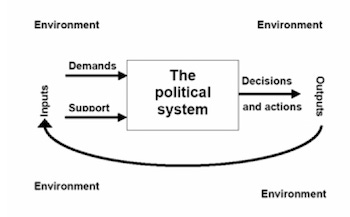Thoughts on the U.S. Political System
I don't feel like saying too much about the recent U.S. election, but I will share some general thoughts.
It’s exciting to see prediction markets proving their power to deliver better political forecasts than traditional polls. We need to develop reliable methods for political forecasting that don’t depend on corporate oligopolies.
I'm glad that Bobby Azarian wrote a lengthy post-election piece — The Case for Progressive Party Reform (And Why I Didn't Vote). Voices like his along with critiques from political figures like Andrew Yang give me a glimmer of hope that the Democratic party and modern progressive movements might eventually return to the ideals and policy positions that made them attractive to me pre-2011.
I'm spending a lot of time reading about systems approaches to politics and thinking about how they might be applied to the current situation in the U.S. David Easton’s political system diagrams were my first introduction to the systems paradigm in 2010 when I was an undergrad at USC.
Easton, writing in the 1950s and 60s, aspired to make political science into a real science by adapting the novel theories and methods that were being pioneered in systems theory and cybernetics.
While there have been significant advances over the decades, in the form of big data and data science along with computer modeling and simulation, I still believe there is much to be learned from the early writings of Easton, a theoretician who had the foresight to understand the necessity of a rigorous systems approach to politics — something that is now becoming fairly obvious to the rest of us.





